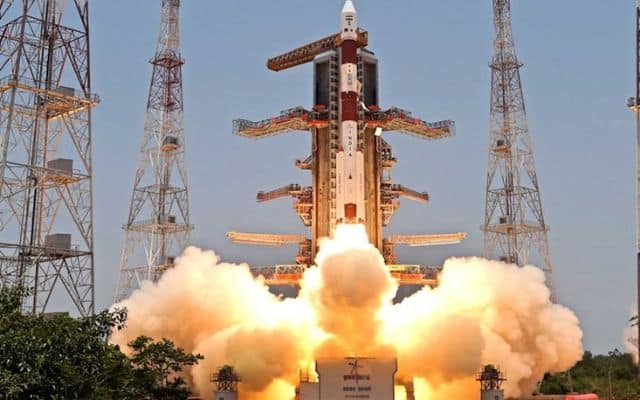India’s Aditya-L1 Solar Mission: Unlocking Sun’s Mysteries

The Aditya-L1 Solar Mission is set to revolutionize our understanding of the Sun’s behavior and its impact on Earth’s space weather.
India has launched its first Sun observation mission, Aditya-L1, following its historic moon landing. The spacecraft was launched from Sriharikota and is scheduled to arrive in four months after travelling 1.5 million kilometres, or just 1% of the distance between Earth and the Sun.
Aditya-L1 is named after Surya, the Hindu god of the Sun, and “L1” represents Lagrange point 1, the specific spot between the Sun and Earth where the spacecraft is headed. Lagrange points are where gravitational forces balance, allowing spacecraft to “hover.”
Once at L1, Aditya-L1 will orbit the Sun at Earth’s speed, requiring minimal fuel. This mission is a big deal for India’s space exploration. Because it’s all about studying Sun, the biggest thing in our solar system.
When they launched it, thousands of people came to watch near the launch site, and it was shown live on TV, and everyone said it was a fantastic success.
After an hour and four minutes of flight, Isro declared it a “mission success.”
Once at L1, Aditya-L1 will continuously monitor the Sun, even during eclipses, enabling crucial scientific studies.
While the mission’s exact cost remains undisclosed, reports estimate it at 3.78 billion rupees ($46 million; £36 million).
Aditya-L1 carries seven scientific instruments to study the solar corona, photosphere, and chromosphere. This study will teach us more about the solar wind and flares, as well as how they affect the Earth’s and space weather in real time.
The mission will also deliver crucial information that will help safeguard satellites and advance our knowledge of the Sun, both of which will be advantageous to life on Earth.
India’s successful moon trip was followed by a solar mission, demonstrating the country’s expanding prowess in space exploration.
India now joins organisations studying Sun, including NASA, the European Space Agency, and Japan. For instance, NASA’s Parker Solar Probe recently achieved space history by approaching the Sun’s surface up close.
Our understanding of Sun, a 4.5 billion year old star that is important to our solar system, will grow as a result of Aditya-L1 mission.
Aditya L1 is India’s first space mission to study Sun. It will be positioned at a special spot called Lagrange point 1 (L1), about 1.5 million kilometers away from Earth. It is able to watch Sun continuously and uninterruptedly thanks to its unusual placement.
Seven instruments are included on spacecraft to study different characteristics of Sun and the region between planets.
Some look directly at Sun, while others examine particles and fields around L1. These tools will help us learn about:
- Solar flares,
- Space weather,
- And why Sun gets so hot.
Instruments on Aditya L1 will dispel important myths about the Sun and its impact on the universe.
The Aditya-L1 Solar mission has some important goals:
Study Sun’s Upper Atmosphere: Look at the outer parts of Sun, like the chromosphere and corona, and see how they move.
Understand Heating and Plasma: Figure out how Sun’s outer layers heat up and study the special kind of gas there. Also, see how big solar eruptions like flares start.
Study Particles and Plasma: Watch the tiny bits and charged particles near Sun to see how they move.
Learn about the Solar Corona: Study the super-hot outer part of Sun and find out how it gets so hot.
Check Plasma Details: Measure things like temperature, speed, and how crowded the plasma is in Sun’s outer layers.
Look at Solar Eruptions: Learn about the big solar explosions called CMEs and see how they happen.
Follow the Solar Event Process: See the steps that lead to solar explosions, starting from Sun’s surface to its outer layers.
- Asteroid shares Earth’s orbit discovered- Could it help future space missions?
- Chandrayaan-3: Moon Mission Reloaded
- Analysis Confirms Successful Artemis I Moon Mission, Reviews Continue
Study Magnetic Fields: Understand Sun’s magnetic fields and how they affect its activity.
Space Weather Causes: Find out where the solar wind (charged particles from Sun) comes from, what it’s made of, and how it moves in space, because it can affect our technology and space weather.






